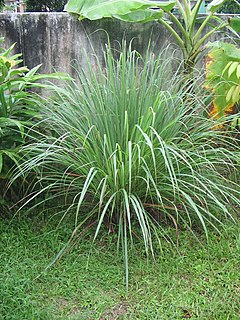
Cymbopogon, also known as lemongrass, barbed wire grass, silky heads, Cochin grass, Malabar grass, oily heads, citronella grass or fever grass, is a genus of Asian, African, Australian, and tropical island plants in the grass family. Some species are commonly cultivated as culinary and medicinal herbs because of their scent, resembling that of lemons . The name cymbopogon derives from the Greek words kymbe and pogon "which mean [that] in most species, the hairy spikelets project from boat-shaped spathes."

Arisaema is a large and diverse genus of the flowering plant family Araceae. The largest concentration of species is in China and Japan, with other species native to other parts of southern Asia as well as eastern and central Africa, Mexico and eastern North America. Asiatic species are often called cobra lilies, while western species are often called jack-in-the-pulpit; both names refer to the distinctive appearance of the flower, which consists of an erect central spadix rising from a spathe.

The Tea Horse Road or chamadao, now generally referred to as the Ancient Tea Horse Road or chamagudao was a network of caravan paths winding through the mountains of Sichuan, Yunnan and Tibet in Southwest China. This was also a tea trade route. It is also sometimes referred to as the Southern Silk Road or Southwest Silk Road.
Thitarodes is a genus of moths of the family Hepialidae. In English Thitarodes is known as "ghost moth". They are found in eastern Asia. The majority are restricted to the Tibetan Plateau. Often in Chinese entomological nomenclature Thitarodes is still referred to as Hepialus, although the name was changed back in 1968. Furthermore, some authors use incorrectly the term "bat moth" which is a bad translation of the Chinese term for ghost moth.

Diqing Tibetan Autonomous Prefecture is an autonomous prefecture in Northwestern Yunnan Province, China. It has an area of 23,870 km2 (9,220 sq mi). Its capital, which is also the largest city in the prefecture, is Shangri-La City.
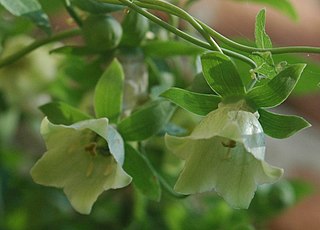
Codonopsis is a genus of flowering plant in the family Campanulaceae. As currently recognized, Codonopsis includes two other groups sometimes separated as distinct genera, i.e. Campanumoea and Leptocodon. The enlarged genus Codonopsis is widespread across eastern, southern, central, and southeastern Asia, including China, Japan, the Russian Far East, Kazakhstan, the Indian Subcontinent, Iran, Indochina, Indonesia, etc.

The Hengduan Mountains are a group of mountain ranges in southwest China that connect the southeast portions of the Tibetan Plateau with the Yunnan–Guizhou Plateau. The Hengduan Mountains are primarily large north-south mountain ranges that effectively separate lowlands in northern Myanmar from the lowlands of the Sichuan Basin. These ranges are characterized by significant vertical relief originating from the Indian subcontinent's collision with the Eurasian Plate, and further carved out by the major rivers draining the eastern Tibetan Plateau. These rivers, the Yangtze, Mekong, and Salween, are recognized today as the Three Parallel Rivers UNESCO World Heritage Site.

Aletris, the colicroot, colicweed, crow corn, or unicorn root, is a genus of flowering plants in the family Nartheciaceae, native to North America and to eastern and southeastern Asia, especially China. It was used as a component in Lydia Pinkham's original Vegetable Compound.
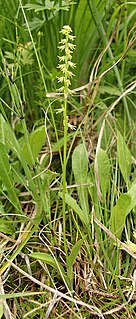
Herminium is a genus of plants in family Orchidaceae, widespread across much of Europe and Asia.

Mixian is a type of rice noodle from the Yunnan Province, China. It is made from ordinary non-glutinous rice, and it is generally sold fresh rather than dried.

Kobresia is a genus of plants in the sedge family. They are sometimes called bog sedges. These perennial sedges are quite similar to Carex species in appearance. The genus is widespread across much of Europe, Asia and North America, with many species native to the Himalayas.
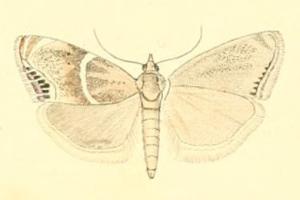
Metaeuchromius is a genus of moths of the family Crambidae.
Nannoglottis is a genus of Asian flowering plants in the daisy family.
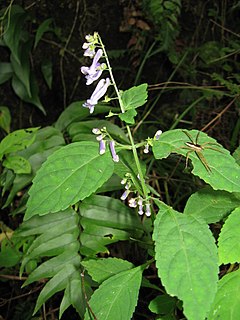
Isodon is a group of flowering plants in the family Lamiaceae described as a genus in 1840. It is native to tropical and subtropical parts of the Old World, primarily Asia but two species are from Africa. Many of the species are endemic to China.
Lithosia yuennanensis is a moth of the family Erebidae. It was described by Franz Daniel in 1952. It is found in Yunnan, China.

Olea tsoongii is a plant of the genus Olea, found in Guangdong, Guangxi, Guizhou, Hainan, Sichuan, and Yunnan provinces of China. It grows as shrubs or trees 3–15 meters in height, with its seed oil used in food and industry.

Metaeuchromius glacialis is a moth in the family Crambidae. It was described by Wei-Chun Li in 2015. It is only known from Galongla Mountain, in Mêdog County in Tibet, China.
Pygospila yuennanensis is a moth in the family Crambidae. It was described by Aristide Caradja in 1937. It is found in Yunnan, China.
Transport in Tibet has steadily improved with the rapid development of the local economy.












